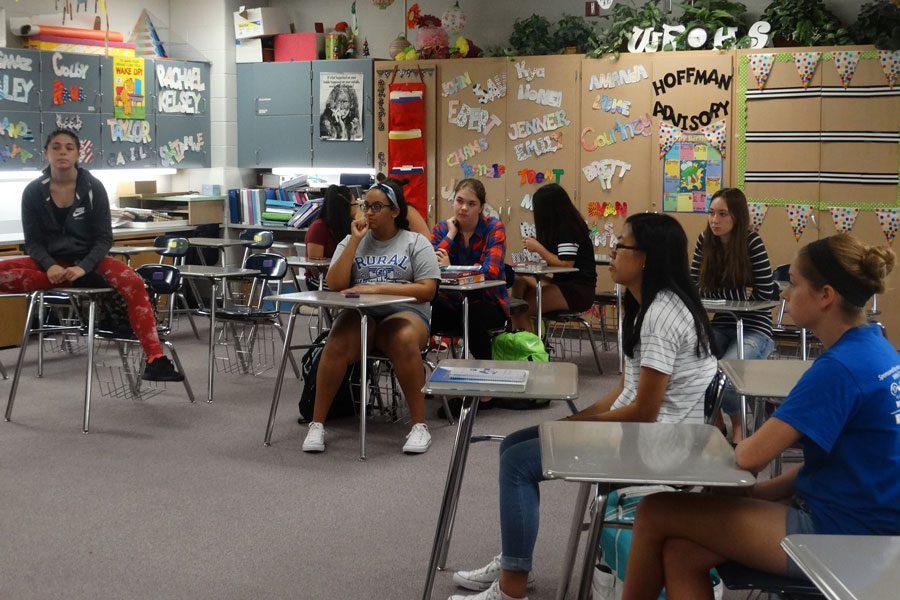Block scheduling not better for students
Students in Future Teachers club listen to club sponsor Margaret Hoffman lecture.
Staying focused for 47 minutes is a difficult task for many Washburn Rural students, but imagine having to stay focused on one subject for an hour and a half.
Many high schools in Topeka, such as Hayden, Topeka High and Topeka West have variations of block scheduling instead of the standard seven-classes-a-day schedule. With a block schedule, students only attend some of their classes in one day and the classes they attend are based on the day of the week.
Some teachers believe block schedules are beneficial to the student, but I believe they are ultimately more harmful.
The most common issue with the block schedule is the productivity of a class period.
“When a 50-minute class becomes a 90 or 100-minute class, what happens? To maintain attention, less instruction and more ‘fun’ activities are needed,” head of Intellectual Property for APP-China Jeff Lindsay said. “This transformation seems to be the greatest thing about block scheduling in the minds of some proponents, but in practice it means a watering down of course content.”
Block schedules are commonly commended because they give teachers time to cover more material, and therefore help the student gain a better understanding than they would if the material was taught on separate occasions. Yet, this is not the case.
According to Melissa Burns of Stanford University, the average attention span of a student is 10-15 minutes. A student who is in a 90-minute class, as opposed to a 47-minute class, may be more susceptible to becoming unfocused and distracted, and may fail to regain interest as the class progresses.
In addition to being inattentive, students can become restless and talkative. Similarly to how elementary kids need recess, high schoolers need time to regroup throughout the day.
For these reasons, I believe block schedules are a disadvantageous approach to learning and ultimately harm students.

